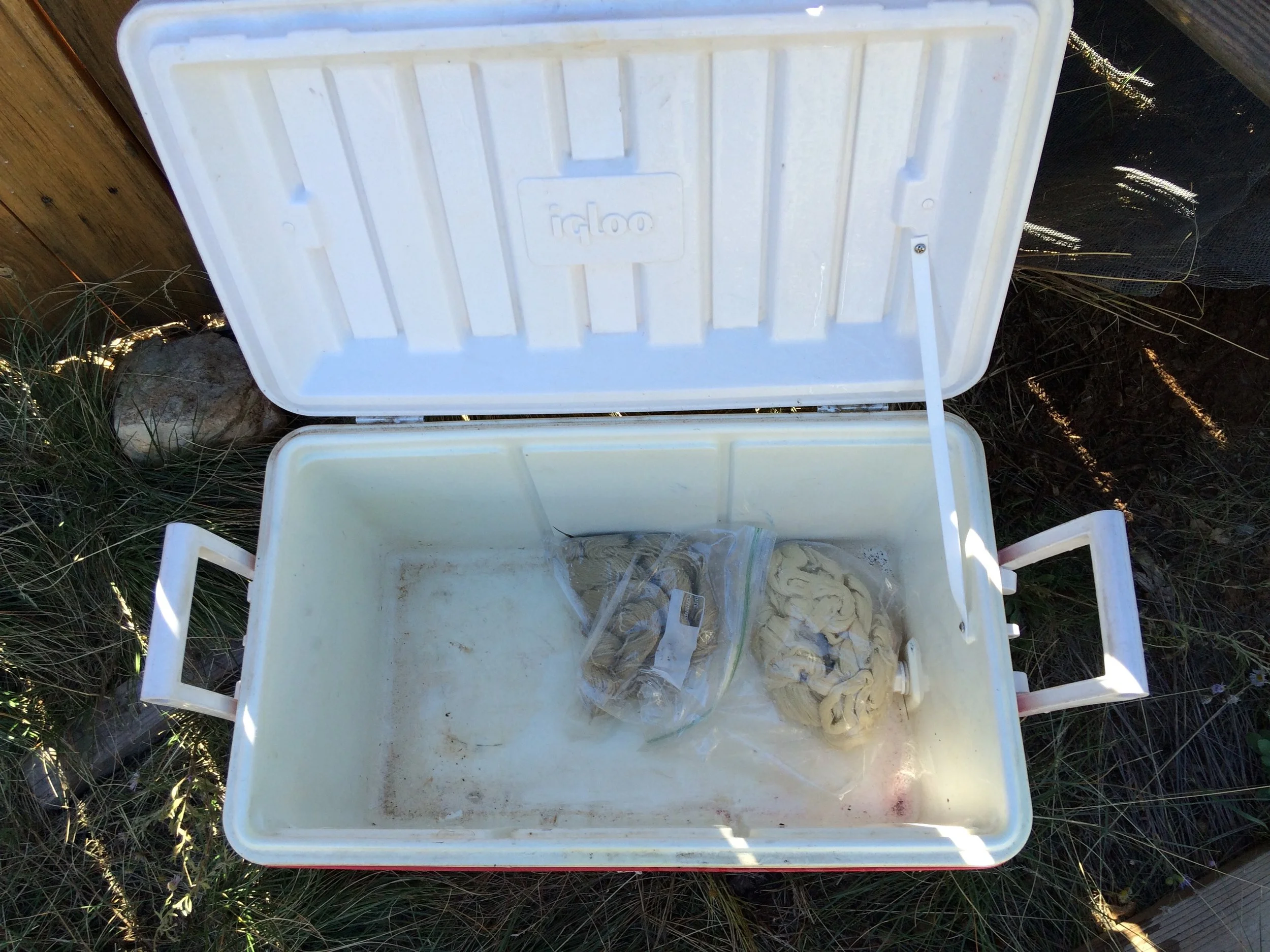Erin Riley, a weaver I very much admire, turned me on to the hashtag #myloomstory from her Instagram feed. My loom is a blackstrap loom made of pieces from many different places. The blackstrap itself and the big, but strangely lightweight beater are from Guatemala, I purchased them many years ago from my weaving teacher, Rachel Brown. The lama bone pick was sent to me from Bolivia by another weaver that I really admire, Laverne Waddington . Some of the sticks came from my first Navajo weaving class with Pearl Sunrise. The shuttle is one of many random tools my Dad found for me with his uncanny ability to find just the right stuff. I remember carving the long picking sticks on a beach in Central California. The rest of the sticks and nylon heddle strings are from Randal Lumber, a local hardware store I often frequent for loom parts. Every loom has a story.
Dye Days
First and second chamisa batches. The magic did not happen with the first dye bath. The second time I let the chamisa sit on the bath overnight before straining it. Also, I added about a cup of alum to the pot after straining out the plants. Maybe the premordanting did not take. Or maybe it's just better to add some alum to the dye bath anyway. One more difference was that I waited for the bath to be quite hot before I added the yarn.
Dye Days
After simmering my yarn in an alum/cream of tartar pot for an hour, then letting it sit in the pot overnight, I sealed it (wet) in zip locks to cure. I did not really measure the alum and cream of tartar, I just put a few spoonfuls in. I'm looking for a good scale so that I can be more scientific about this, but I do enjoy working intuitively! Ideally it should cure refrigerated for two weeks, but I'm short on time (the chamisa is going to seed!) so mine cured for a couple of days. I learned about curing mordanted yarn from Michele Whiplinger, and it is definitely one of my best tricks! I use an old cooler dedicated to this purpose. I keep my mordanted yarn away from my kitchen and food, so I would never put it in my home frig.
Using fresh chamisa, ground madder, and indigo I plan to dye yellow, orange, red, blue, purple, and something very dark for my outlining color (for this I will probably do multiple dye baths, using all these dye stuffs one by one, then maybe some sage if the color doesn't come out dark enough). Most of the supplies that I don't gather fresh are from Michele Whilinger's Earthues- my absolute favorite natural dyeing resource!
Chamisa Blooms
When the chamisa blooms I start planning my next dye day. Chamisa flowers dye great yellows that I think are pretty light fast . I like to use it when it's fresh, and yellow is pretty important to me, so I do most of my dyeing at this time of year.


